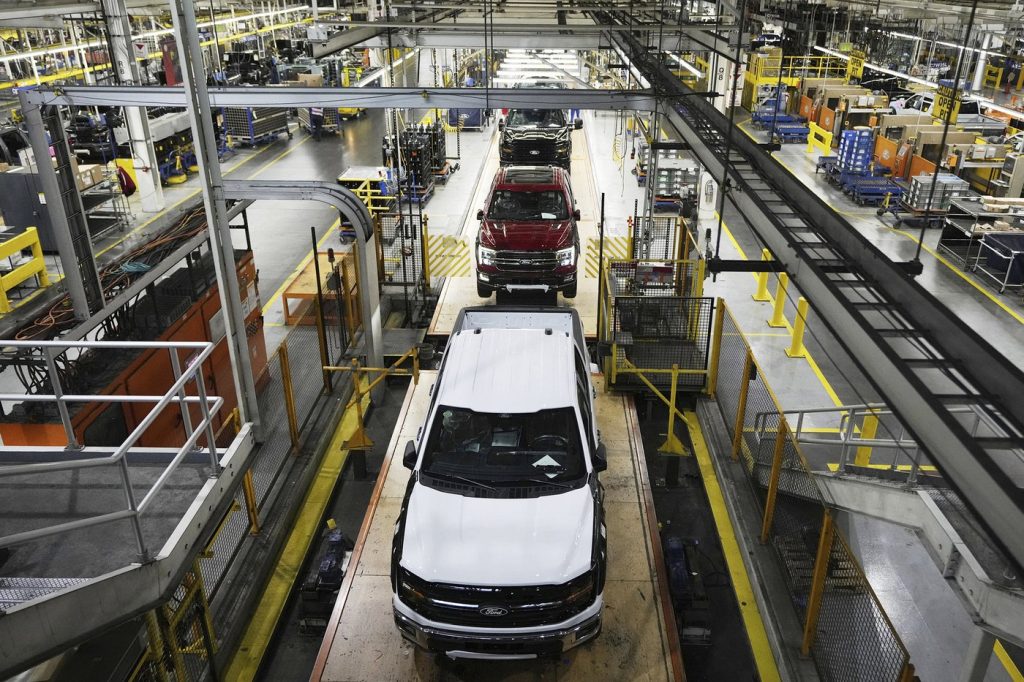Under President Donald Trump’s new tax-cut law, millions of individuals will now have the opportunity to claim a federal tax deduction for the interest paid on auto loans. This marks the first time that borrowers can benefit from such a deduction without the requirement to itemize their deductions, a change aimed at making car ownership more affordable and stimulating domestic auto production.
To qualify for this new auto loan interest tax break, certain criteria must be met. The vehicles must be brand new, assembled in the United States, and the loans must be issued in the year the law takes effect, beginning in 2025. The law allows taxpayers to deduct up to $10,000 of interest payments on loans for eligible vehicles from 2025 through 2028. The criteria apply to a variety of vehicles including cars, motorcycles, SUVs, minivans, vans, and lightweight pickup trucks under 14,000 pounds, provided they are purchased for personal use.
The deduction will apply to income tax returns filed for the year 2025, although eligibility will phase out for individual taxpayers earning between $100,000 and $150,000, and for joint taxpayers earning between $200,000 and $250,000. Those with incomes above these thresholds will not qualify for the tax break.
According to data from Cox Automotive, U.S. dealerships sold 15.9 million new light vehicles in the previous year, with slightly over half being assembled domestically. Approximately 60% of these retail sales were financed through loans. If purchasing patterns persist, it is estimated that around 3.5 million new vehicle loans could become eligible for this tax deduction in 2025, after accounting for fleet sales and income limitations.
It's important to note that the assembly location of the vehicle is crucial for tax eligibility. The vehicles must be assembled in the U.S. regardless of the automaker’s headquarters. For example, while all Tesla vehicles sold in America are assembled domestically, the same applies to all Acura models produced by Honda. In fact, last year, 78% of Ford’s vehicles sold in the U.S. were assembled locally. Potential buyers must pay close attention to specific models, as assembly locations can vary even within a single brand.
The average new vehicle loan in the U.S. is approximately $44,000, financed over a six-year term. Savings from this tax deduction will vary based on individual interest rates; however, at a 9.3% interest rate, an average vehicle buyer could save roughly $2,200 on taxes over four years. Savings would decrease for loans with interest rates lower than this, with the exact figures dependent on the terms agreed upon between the consumer and lender.
Unlike the home loan interest deduction, which is available only to those who itemize deductions, the new auto loan interest deduction is accessible to all taxpayers, including those who opt for the standard deduction. This means that for many taxpayers, a lower federal adjusted gross income could potentially result in reduced state income tax liability due to state tax systems commonly referencing federal adjusted gross income as a starting point.
As dealerships prepare for the introduction of this new deduction, some in the industry believe it could incentivize vehicle sales. For instance, Paul Ray, General Manager at Bowen Scarff Ford in Kent, Washington, reported an uptick in customer inquiries regarding the tax deduction prior to its final approval. He has since promoted the auto loan tax deduction on the dealership’s website, suggesting that it may influence car-buying decisions in the coming year.
However, some analysts remain skeptical about the overall impact on sales. Jonathan Smoke, chief economist at Cox Automotive, pointed out that while the average annual tax savings might be appealing, they could be less than a single monthly payment on a vehicle loan. He suggested that the tax deduction may be more likely to influence consumers to finance rather than lease or purchase vehicles outright, rather than serving as a definitive factor for new car purchases.










